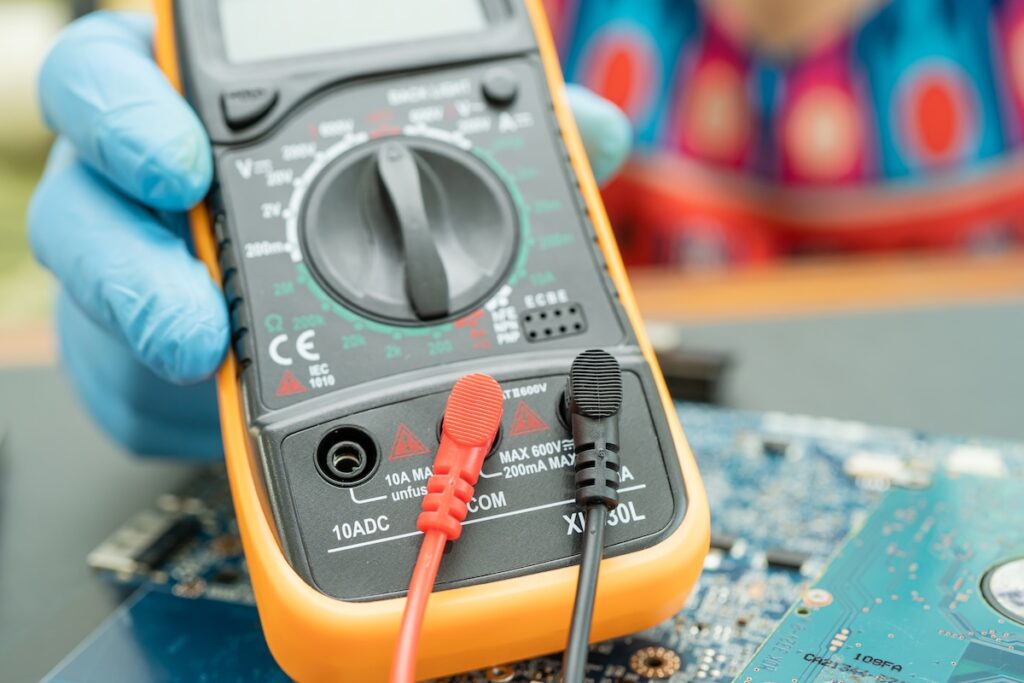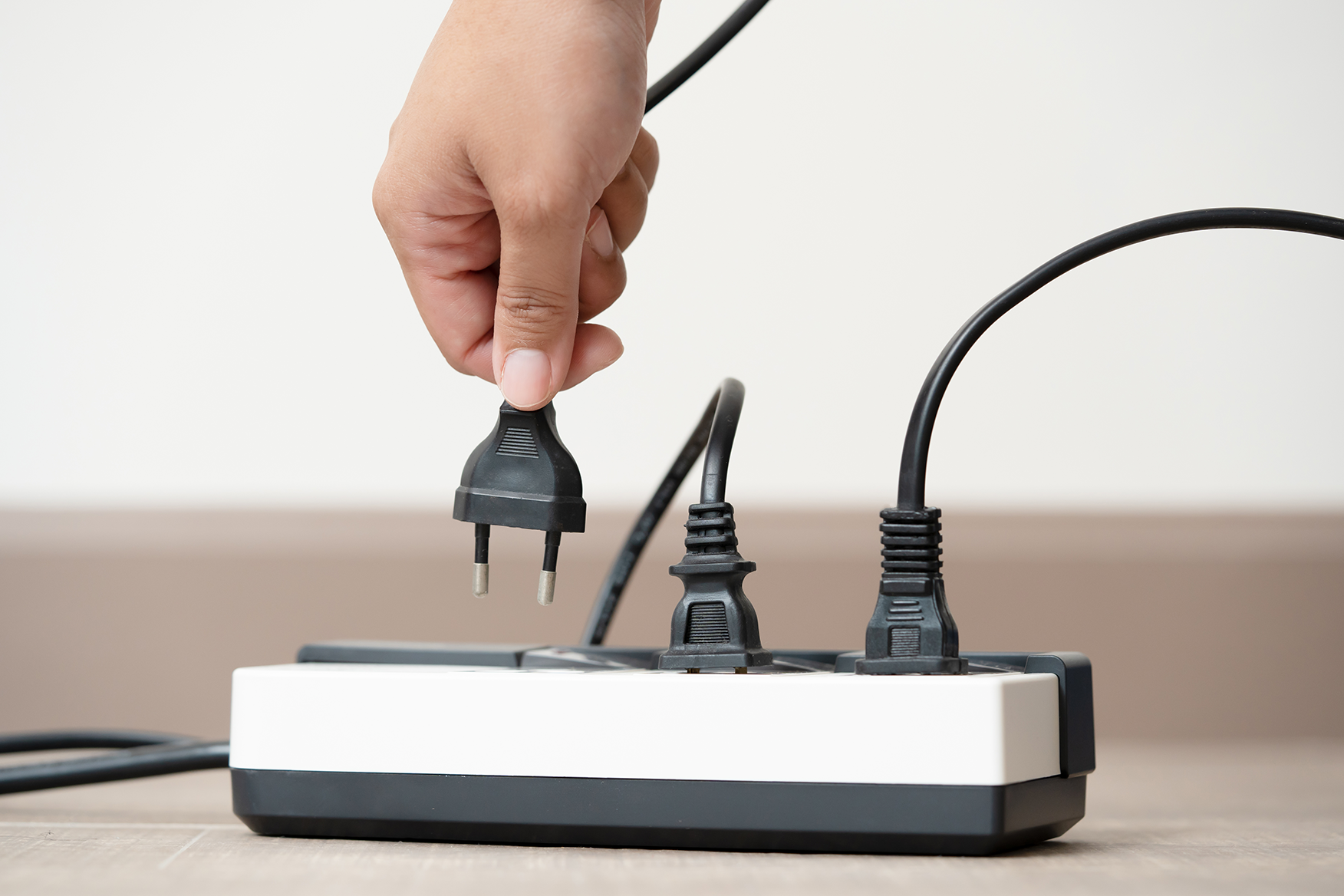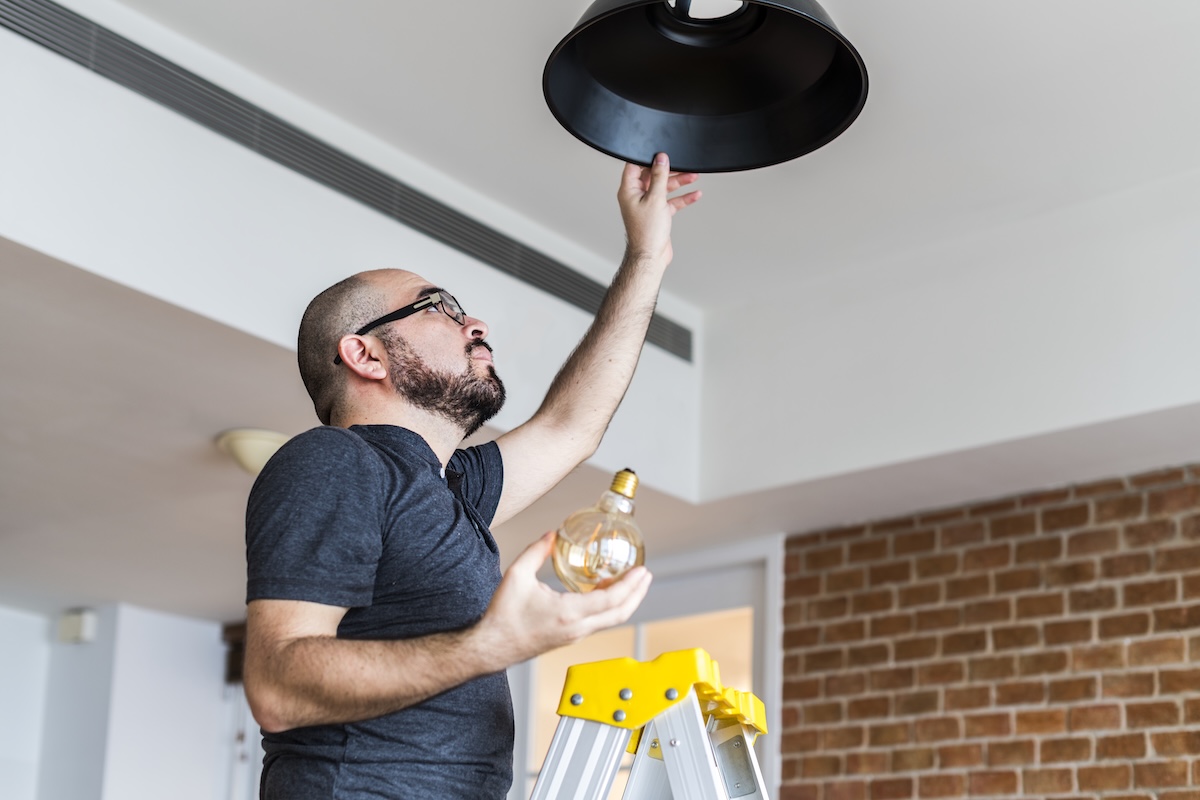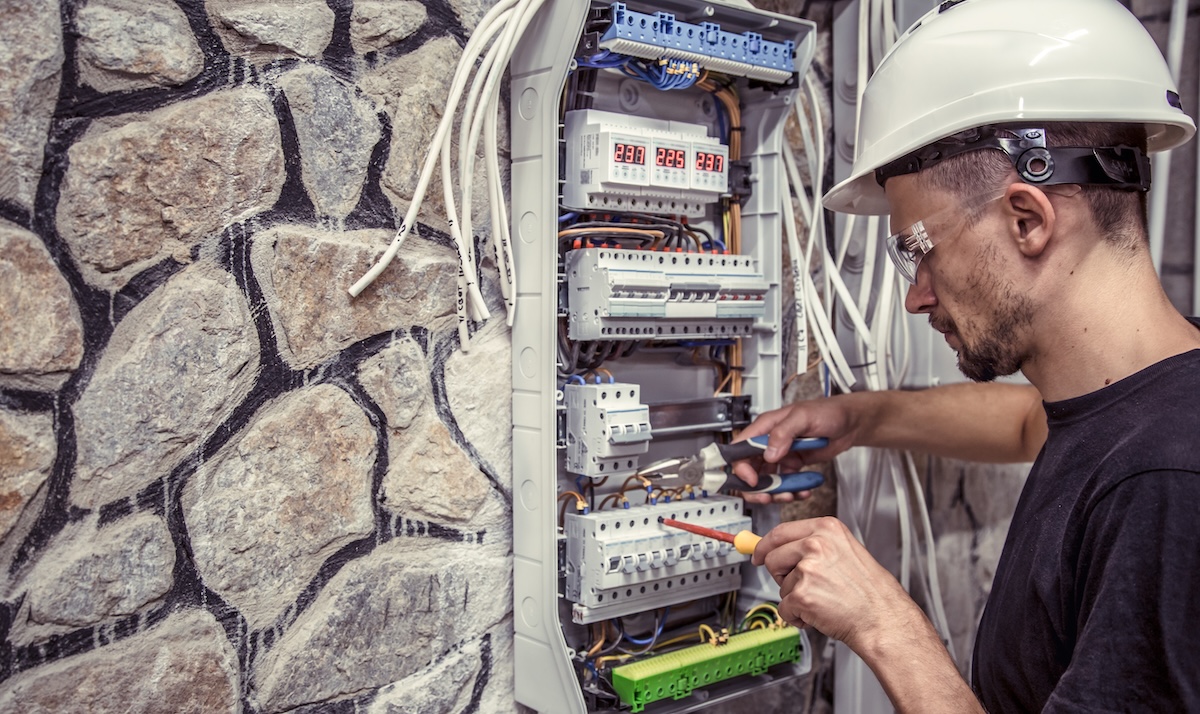Common electrical problems are a part of homeownership, often showing up in the form of flickering lights, faulty switches, or outlets that just don’t work.
While these issues can feel minor, they often signal larger problems like corroded wiring or overloaded circuits, which could lead to fires or expensive repairs. Understanding common electrical problems and troubleshooting can help you identify when a quick fix will do or when it’s time to call in a licensed electrician.
Diagnostic Tools and Safety Precautions
Before tackling any electrical issue, having the right tools and knowing how to use them safely is essential. These basic diagnostic tools can help you pinpoint problems quickly:
- Circuit tester – Lights up or emits a sound upon detecting voltage.
- GFCI (Groud-Fault Circuit Interrupter) tester – Monitors common wiring problems.
- Multimeter – Measures alternating current (AC) for electrical wiring at home.
- Circuit analyzer – Identifies abnormal operations and common electrical problems on the line.
- Insulation tester – Helps diagnose faulty wires and current leakage.
When working on electrical systems overall, always prioritize safety. Keep these precautions in mind when performing electrical troubleshooting:
- Make sure your hands are dry before doing electrical work.
- Wear personal protective equipment (PPE) and gloves.
- Keep electrical devices and equipment away from water.
- Don’t overload outlets as these may cause fires.
- Ensure the power is off using a non-contact voltage tester.

Identifying and Solving Common Electrical Problems at Home
These are the most common household electrical issues, what they mean, and how to solve them.
Faulty Switches
How to identify? Your switches are not working properly. This could be because of the faulty circuit wiring with visible signs such as loose fittings and cracks.
Does it violate a code? Yes
What is the danger level? High. With broken components that may ignite flammable items, defective switches can cause electrical fires.
How to fix? Replace your old switches with new ones. Over time, wires get damaged and can disrupt the connection.
Loose Outlets
How to identify? When plugging into a cord, it doesn’t grip properly. This causes the wires to move around and fall out at any moment.
Does it violate a code? Yes
What is the danger level? High. As soon as the outlet flickers, it causes crackling sounds and exposes anyone to high voltage. This eventually leads to electrical shocks and fires.
How to fix? Shut off the power. Then, safely remove the outlet with a screwdriver. Take the wires out and install new ones or replace the outlet instead.
Overloaded Circuits
How to identify? Plugging too many electrical devices into the socket causes an overload. This can blow out power or lead to an electric shutdown in your home.
Does it violate a code? Yes
What is the danger level? High. Using extension cords without proper wiring can result in fires.
How to fix? If there’s a power outage due to overloaded circuits, just reset your circuit breaker. You may also need to replace your blown fuse.
Intermittent Power Loss
How to identify? If not due to lack of electricity supply in your area, frequent power outages are often because of tripped circuit breakers and faulty wirings inside your home.
Does it violate a code? No
What is the danger level? Minimal. It may become an issue if the power loss lasts for prolonged periods, which causes disruptions to essential services.
How to fix? Check for loose wirings and replace burnt out cables. If the problem persists, contact your local energy supplier.
Flickering or Dimming Lights
How to identify? Overheating and loose connection are two of the most common culprits of flickering lights.
Does it violate a code? Yes
What is the danger level? High. Intense heat on the light bulb can melt the socket and lead to arcing or igniting sparks from one wire to another.
How to fix? Replace old, faulty, and incompatible light switches. Go for 60-watt bulbs or LED to prevent overheating.
No GFCIs
How to identify? This usually trips power off after the GFCI device fails after starting many times.
Does it violate a code? Yes
What is the danger level? High. It can lead to electrocution if ground fault comes into contact with water in areas such as kitchen and bathroom.
How to fix? Install GFCI breakers on the main electric panel of your household.
Overwired Panel
How to identify? Having too many circuits in your fuse box, exceeding 80% of its capacity.
Does it violate a code? Yes
What is the danger level? Minimal. It only poses a problem when you appraise or sell your home.
How to fix? Try unplugging some of your devices into another circuit or you can install a subpanel with more slots.
Faulty Extension Cords
How to identify? Extension cords can overheat when the currents flowing through them are too much to handle.
Does it violate a code? Yes
What is the danger level? High. Undersized extension cords can catch fire, especially if used with appliances that draw more watts.
How to fix? Inspect cords and replace damaged ones. Using a wire stripper, cut half an inch of insulation from each side of wire. Then, use a voltage tester to ensure proper connections.
Tripping Circuit Breakers
How to identify? Ground faults and bad wiring often lead to a circuit breaker trip. If your circuit breaker cannot handle the excess current load, it trips to turn off the power.
Does it violate a code? Yes
What is the danger level? High. If it keeps tripping, the wires can damage your appliances and eventually cause fire.
How to fix? Make sure to turn off all your devices on the circuit. Then, locate the tripped breaker and flip it off.
Plug Falls Out of Receptacle
How to identify? Over time, the outlet finds it difficult to grip the prongs, which can damage the appliance cords.
Does it violate a code? No
What is the danger level? High. If you can’t keep the plug in place, you can be electrocuted. Loose outlets also ignite sparks and fires.
How to fix? Turn off the power and tighten the screws of the outlet. You might need to replace old receptacles with new ones.
Buzzing Noises
How to identify? Loose connections, faulty appliances, and overloaded circuits often cause electrical buzzing.
Does it violate a code? No
What is the danger level? Minimal. But if not addressed quickly, it can lead to overheating and fires.
How to fix? Check any loose screws or wires on the outlet and fasten them. You may also need to replace your burnout bulbs, which can cause buzzing sounds.
High Electricity Bills
How to identify? If you find your bills higher than what you actually consume, then this may be a sign of faulty wiring or outdated appliances in you home.
Does it violate a code? No
What is the danger level? Minimal. A surge in electricity bills can be an underlying sign of damage in your electrical systems.
How to fix? Inspect your home for faulty circuits and have them replaced. You can also install surge
Fixing Common Electrical Problems – DIY route and calling a pro
What to Expect
All things considered, you can always troubleshoot common electrical problems at home, but it’s best to consult a licensed electrician for more complex issues.
During the inspection, the electrician will do the following:
- Check for faulty wiring and assess outlets, light fixtures, and switches.
- Use specialized equipment to test if your circuits are working properly.
- Identify any signs of damage on the electrical panel.
- Perform a fuse box inspection.
- Make sure there aren’t any code violations to maintain compliance.
Visit Lineside Electrical for troubleshooting electrical issues at home. We provide electrical services in Los Angeles, Orange County, and Riverside County.

Frequency of Inspections
Every household should undergo inspections every three to five years to identify common electrical problems. For homes older than 40 years old, we recommend having it annually. If you’re planning to purchase or renovate a house, this should be first on your list.
Contact Lineside Electrical today for electrical repairs and installations.





